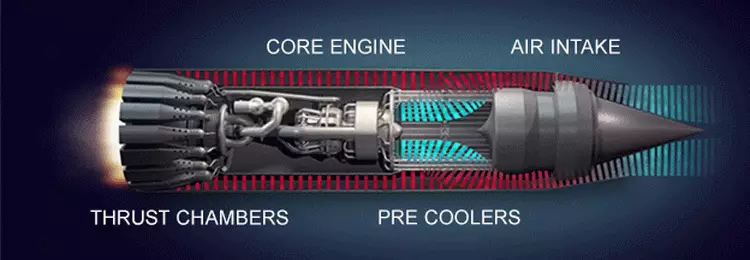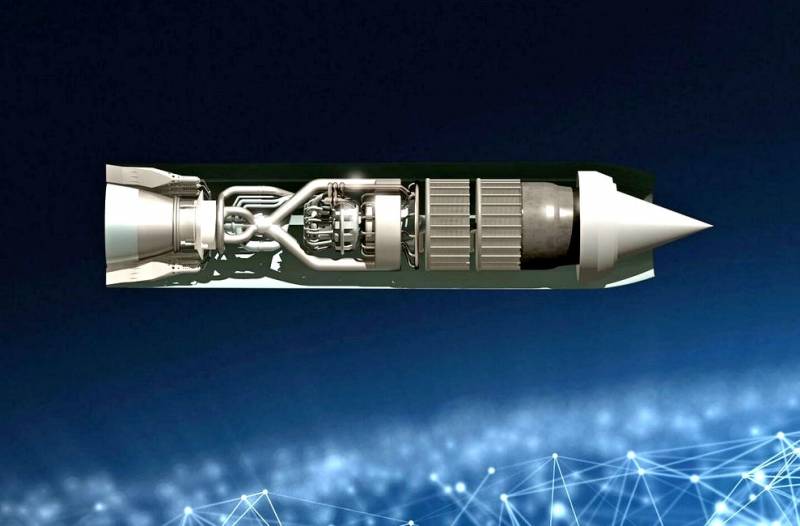The British revealed the principle of the hybrid hypersonic engine
The Synergetic Air-Breathing Rocket Engine, or SABER for short, is an innovative hybrid hypersonic air-rocket engine developed by Reaction Engines, a British company. The designers have already managed to protect the outline design of the unit and in the next 18 months will begin testing individual components of the power plant. The creators of SABER say that their offspring will be able to function effectively, both in the atmosphere and in space vacuum.
The main advantage of the latest engine is its “revolutionary” pre-cooling chamber. Due to its unusual design, represented by a combination of twisted pipes with liquid hydrogen, the chamber will be able to “cool” the flow entering the front air intakes from 1000 ° C to -150 ° C in just a thousandth of a second.
Under normal conditions, the above procedure will inevitably lead to icing of the engine. However, the developers from Reaction Engines solved this problem. It turns out that during acceleration the unit will function as a conventional jet engine in atmospheric air and liquid hydrogen. In this case, air will enter the gas generator due to the bypass air intakes, bypassing the fuel supply system.

Further, upon reaching Mach 5, the engine will go into rocket mode using liquid oxygen as an oxidizing agent. In this case, the ducts will be completely closed. The maximum overclock that SABER can provide in this mode will be about 25 Machs.
In the near future it is planned to test the gas generator. But the tests of the assembled unit are likely to take place in 2020-2021. It is worth noting that the project has already received tangible financial support from Rolls-Royce and Boeing, as well as from the European and British space agencies.
The main advantage of the latest engine is its “revolutionary” pre-cooling chamber. Due to its unusual design, represented by a combination of twisted pipes with liquid hydrogen, the chamber will be able to “cool” the flow entering the front air intakes from 1000 ° C to -150 ° C in just a thousandth of a second.
Under normal conditions, the above procedure will inevitably lead to icing of the engine. However, the developers from Reaction Engines solved this problem. It turns out that during acceleration the unit will function as a conventional jet engine in atmospheric air and liquid hydrogen. In this case, air will enter the gas generator due to the bypass air intakes, bypassing the fuel supply system.

Further, upon reaching Mach 5, the engine will go into rocket mode using liquid oxygen as an oxidizing agent. In this case, the ducts will be completely closed. The maximum overclock that SABER can provide in this mode will be about 25 Machs.
In the near future it is planned to test the gas generator. But the tests of the assembled unit are likely to take place in 2020-2021. It is worth noting that the project has already received tangible financial support from Rolls-Royce and Boeing, as well as from the European and British space agencies.

Information